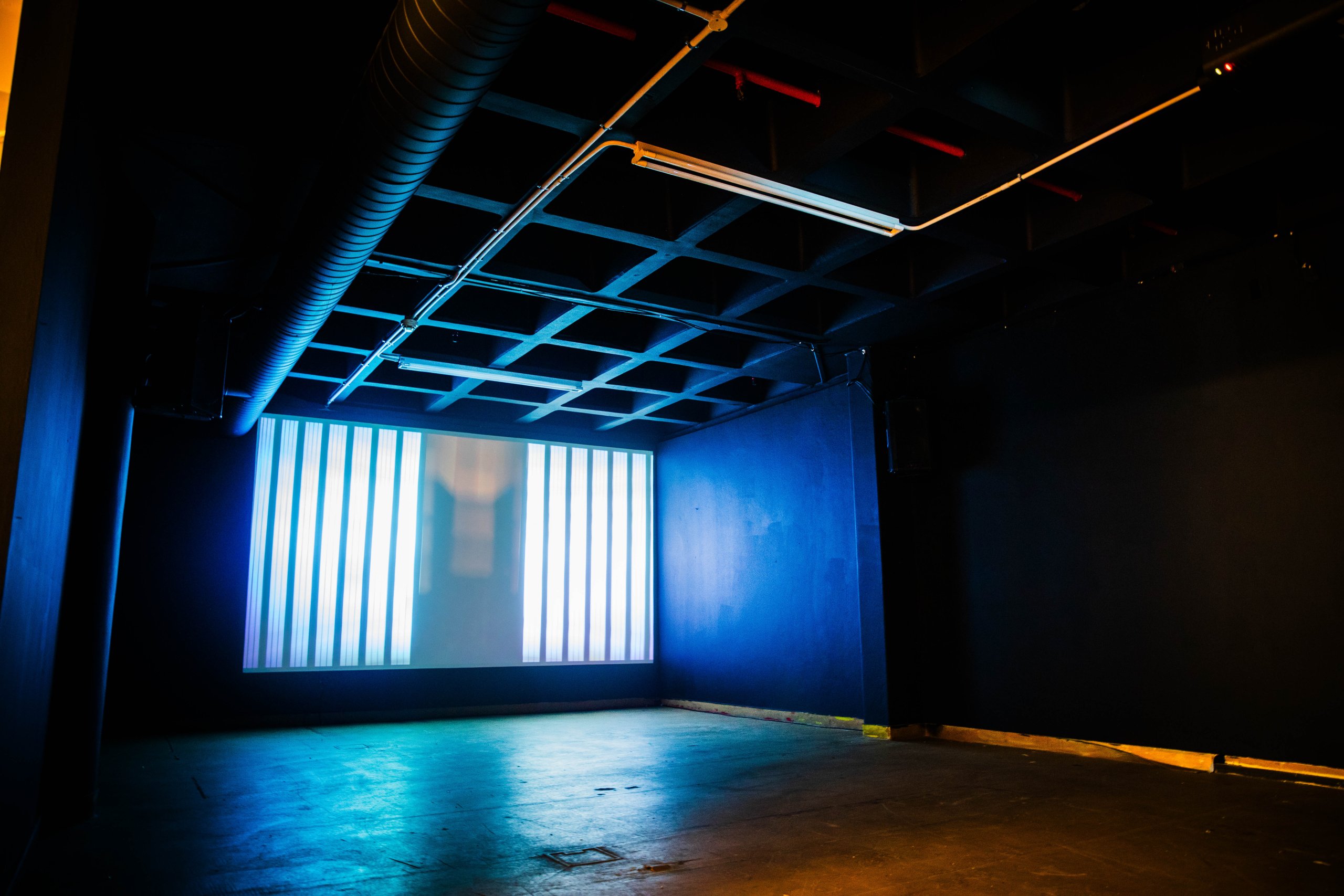Dim Corners
To: NGO Nothing Gets Organised, Johannesburg
November 16, 2024 – January 31, 2025
Exhibition, Johannesburg
November 16, 2024 – January 31, 2025
Exhibition, Johannesburg
JOHANNESBURG | Since 2022 OtherNetwork and ifa have reimagined the framework of a touring exhibition through a flagship curatorial project that takes the form of a relay. For each iteration, an independent art space is given the opportunity to invite another from outside of the country to guest-curate an exhibition in their space. For the third edition, NGO - Nothing Gets Organised partnered with renowned Brazilian non-profit art space Pivô. This culminated in a conversation between two artists from the cities of Johannesburg and São Paulo, under the cover of darkness.

In the dim, candlelit stillness of a blackout, the profound kinship between the power grid’s faltering pulse and the human body’s elusive balance becomes self-evident. Just as the ceaseless demands on an overstretched electrical system lead to an inevitable collapse, so do the relentless pressures of modern life erode our inner reserves, culminating in the all-too-familiar state of burnout. Like camera lenses, our eyes gradually adapt to the darkness, searching for light in the shadows, mirroring the resilience and adaptability required to navigate these moments of forced stillness. In each case, the fragility of overtaxed systems becomes apparent, and the flickering of lights and the dulling of spirits both signal a desperate need for rest, recovery, and a re-evaluation of our insatiable drive for productivity. In these moments of forced stillness, we may find an opportunity to reflect on the delicate equilibrium required to sustain our worn-out cities and bodies.
This resonance forms the thematic backbone of Dim Corners, an evocative exhibition in Johannesburg featuring new works by Brazilian artist Leticia Ramos and South African artist Zen Marie. The exhibition takes into account the city’s frequent energy shortages, and also the recent blackouts that São Paulo had experienced since this project started, weaving a narrative that intertwines the immediate physical impact with the broader, insidious issues of climate change and environmental racism. Ramos and Marie, through their distinct artistic lenses, lay bare the socio-economic and environmental crises underpinning these blackouts, urging viewers to confront the realities often left in the shadows.
With her meticulous photographic techniques and hauntingly detailed video installations, Leticia Ramos captures an undetected megalopolis with eerie, ephemeral quality under blackout conditions. Her work is a visual symphony of darkness and light, where the intermittent glow of emergency lights and candles becomes a metaphor for resilience amidst adversity. Ramos’ work documents these moments and provides a stark reminder of the inequities exacerbated by environmental degradation and climate change.
Zen Marie has created a multi-channel video work, filmed over six months while driving on the De Villiers Graaf elevated highway, commonly known as the double-decker highway, in Johannesburg, South Africa. His camera works in an attempt to understand this structure—its layers, concrete beams, and apertures—and serves as a basis for speculations on the city it bypasses. This work reflects on the highway’s design as a lingering fantasy of modernism, one that has evolved into a present marked by fleeting capital, hijacked buildings, and failing infrastructure.
Dim Corners is a pretext for a dialogue between two artists who didn’t know each other beforehand and who share similar concerns, while speaking from different angles of the Global South. Just as a city’s lights can dim without warning, so too can the vitality of its residents; both serve as reminders that when the systems in place fail, the consequences ripple far beyond mere inconvenience.
10 bit Digital video, Multichannel, Installation variable, Loop
FLY_OVER is a multi-channel video work resulting from a series of ‘video sketches’ filmed while driving on the De Villiers Graaf elevated highway in Johannesburg, South Africa. Filmed over an extended period of time, the camera is deployed as a tool for observing or scanning the highway and the movement it produces. The work is an attempt to understand this concrete and steel manifestation of civil engineering in relation to the city that it passes around and through.
More commonly referred to as the double decker highway, the De Villiers Graaf flyover has its origins in aspirations for Johannesburg that came with a Post World War II, gold-boom, Apartheid South Africa. In this work, the structure of the flyover, its layers, concrete beams and apertures are used as prompts for speculations on the city that it bypasses; its grid and its design as a fantasy of modernism that persists even if it is a modernism that is morphed and twisted in peculiar ways, leading up to its present state of evacuated capital, hijacked buildings and failing infrastructure.
2024, 16mm, 4K, transferred to HD, 8’
During an electromagnetic storm caused by a solar collapse, the sky changes, the city energy switches on and off, telematic communication is interrupted, and wifi waves disappear. During this blackout, a massive sphere appears inside a hole in the ground of an ancient building. In archaeology, a Witness Block is the designation of a significant part of an archaeological site for future assessments, preservation, and more in-depth research when technology allows. In the film, the witness block is a phantom of the future that travels through time.